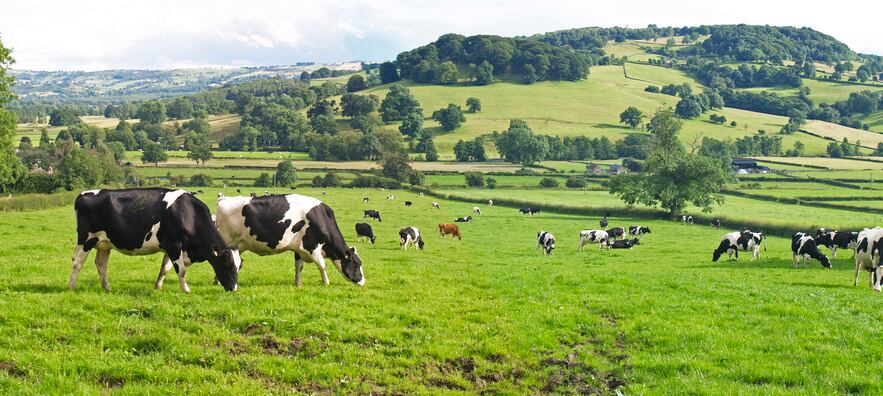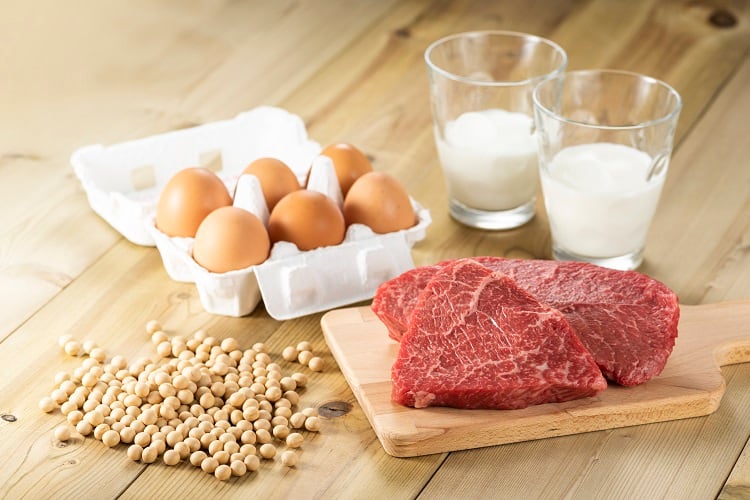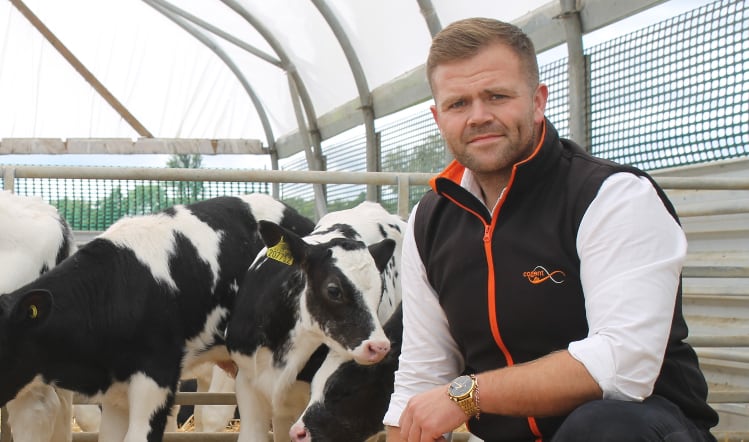The Hartpury Herd Index can be replicated on any dairy herd, enabling producers to select and breed cows that are best suited to their farm conditions. The idea is to select cows that are not only productive over their lifespan but also have lower carbon emissions, said the professor.
He conducted a study aimed at identifying sustainable milking cows and herd replacements within the university’s commercial dairy herd of 220 Holstein-Friesians and a small herd of Guernsey cattle, using a customised profit and carbon total merit index. Set within the Hartpury campus, Home Farm is not only a commercial farm but is also a teaching farm for students.
The index selects cows on milk traits - milk volume, milk fat and protein - calving interval, somatic cell count and lifespan traits, qualities that are deemed critical for economic and emissions performance.
The goal would be that carbon emissions from each cow are reduced by 10% or more by selecting for more sustainable cows.
“The approach can be used anywhere in the world. Breeding is cost-effective if done correctly as the change is permanent and cumulative with time,” Bell told us.
Vital tools
Tools such as this are needed by the dairy industry to make informed changes that are economically viable and environmentally sustainable, according to Bell.
In the UK, the emissions per unit of milk produced by dairy cows have been declining, by about 1% per annum over the last few decades with improved efficiencies, primarily due to better genetic selection and nutrition. However, the emissions per cow are estimated to increase by 1% per annum due to increased production, according to data in a paper written by Bell and colleagues in the journal, Agriculture.
The novelty aspect in respect of this work is the application of a bespoke breeding index at the farm level: Identifying sustainable cows for the individual farm conditions. Typically, farms can use national economic or environmental breeding indexes to select cows and bulls on traits of interest but doing it at the farm level should be more targeted, he explained.
“The [idea of the] inclusion of greenhouse gases (GHG) and carbon footprint started many years ago as we looked at the impact of breeding on emissions intensity in both the UK and Australia – Australia was interested in the potential for breeding being part of the countries Carbon Farming Initiative. This was at a national level. We have applied this approach at the farm level at Hartpury using detailed farm production data and financial records.”
Every dairy farm can obtain the genetic report for its cows from AHDB. “The genetic background of each cow for a range of biological traits is represented by a breeding value, which tells you if it is above or below the average for that trait. Economic or carbon values can then be attributed to each trait and the sum of the breeding value x weight for all traits of interest will attribute an index value to the individual animal. We then rank the animals on high to low index values and select the high index animals for breeding replacements and future animals and the low animals can be replaced or sold,” explained the academic.
He estimated that around 80% of the cows on Hartpury Farm are sustainable under the index terms: “So we’d be looking at ultimately replacing the other 20% with younger animals that are more sustainable for the future based on our selection index.”
Time will tell how successful it will be, he added, but the approach is allowing Hartpury Farm to identify cows that are more suited to the farm and hence healthier and more productive over their lifetime with a lower carbon footprint.
Individual cow assessment
Bryan Carter, herd manager at Hartpury said the index gives him the ability to pinpoint individual cows within the herd and evaluate them on an individual basis rather than as a collective.
“Historically, farmers may have bred a show-standard cow but when you look at her figures, she may not be the best cow within the herd. The index enables me to select the most suitable heifers to bring into the herd, meaning we can continue to strengthen the herd each year and make it more sustainable. It also means our cows live longer and produce more calves before they retire.”
Asked whether the index is of interest to other dairy industry stakeholders, Bell said: “With a big emphasis on carbon auditing and sustainability around livestock production the selection of farm animal on sustainability measures will happen, but it often takes time for new approach to be adopted.”





